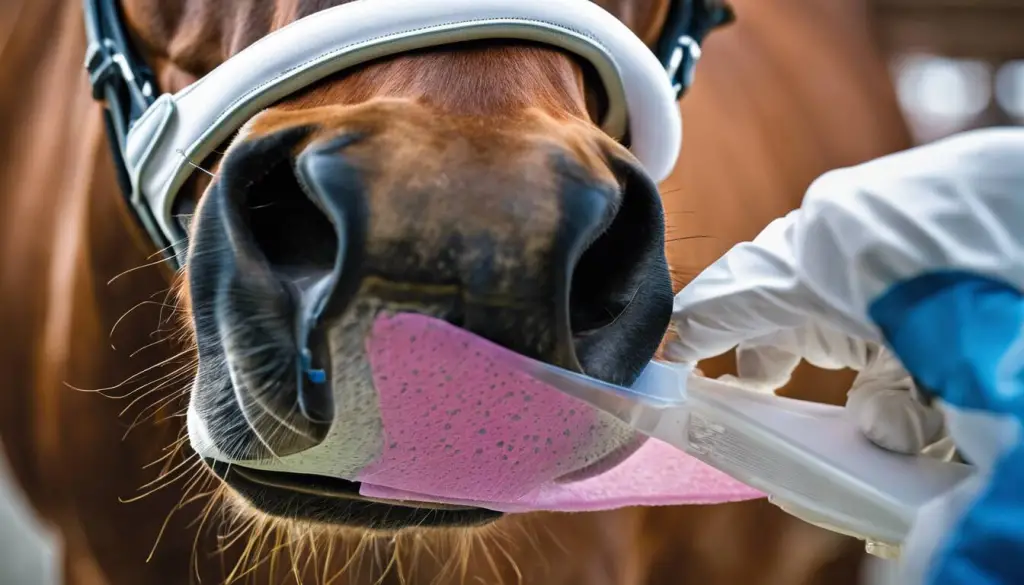DNA Testing for Livestock: Accuracy, Benefits, and Cost-Effective Solutions for Livestock Management
Are you tired of playing the guessing game with the number of your livestock’s lineage and health status? Dive into the revolutionary world of DNA testing for livestock, a pioneering technological advancement that guarantees accurate results, enhances animal well-being, and provides cost-effective solutions to streamline farm management. The secret ingredient of this game-changer lies in the collection of dna samples. This scientifically backed method, fortified by genomics, has been transforming livestock management practices globally, boosting productivity, and ensuring a healthier food chain for us all. Stick around as we unravel the mystery behind DNA testing for livestock, exploring its accuracy, benefits, content, and why it could be the game-changer your farm needs, in the order of its inception to application.
DNA testing for livestock is a process used to determine genetic information and characteristics of animals. It plays a crucial role in breeding programs, disease management, and improving overall herd health. When collecting DNA samples, every piece holds a gene with a unique piece of information for us to understand. This vital step of dna collection is followed by extracting the DNA, and analyzing it using cutting-edge genomics to reveal valuable genetic insights. For specific instructions on how to collect a sample for DNA testing, it is recommended to consult with a reputable testing company or veterinary professional.
What is Livestock DNA Testing?
Livestock DNA testing involves the analysis of an animal’s genetic material to obtain valuable information about its ancestry, breed composition, and specific genetic traits. By examining the DNA of livestock, such as cattle, sheep, pigs, and horses, farmers, and breeders can make informed decisions regarding breeding practices, health management, and overall improvement of their herds. This advanced scientific technique, based on genomics, allows for precise identification and evaluation of genetic markers, enabling targeted selection and better livestock management strategies.
For instance, consider a cattle farmer who wants to improve the milk production in their dairy herd. By conducting DNA tests on individual cows, they can identify animals carrying genes associated with high milk production and use this information to selectively breed those individuals. This method, known as EPDs (Expected Progeny Differences), helps establish desired traits in future generations more efficiently and effectively, making order out of the otherwise chaotic genetic selection process.
Types of Livestock DNA Tests
There are several types of DNA tests available for livestock that cater to different purposes within the realm of livestock management.
One common type is Parentage Verification, which aims to confirm the parentage of an animal by comparing its DNA profile with that of its alleged parents. This test helps ensure accurate record-keeping and pedigree information.
Another significant application is Genetic Trait Testing, which focuses on analyzing specific genetic markers associated with desirable or undesirable traits. For instance, it can be used to identify animals carrying genes related to disease resistance or meat quality.
Additionally, Breed Composition Analysis provides insights into the genetic makeup of an animal by examining its ancestry across different breeds. This information allows breeders to make informed decisions about crossbreeding, breed improvement programs, or maintaining a purebred population.
Lastly, Genomic Selection utilizes cutting-edge technology to identify genetic variants associated with performance traits such as growth rate or carcass quality. By assessing an animal’s genomic profile, farmers can predict its potential performance before investing time and resources into its development.
As we have seen, these different types of DNA testing for livestock offer valuable insights into genetics, parentage, breed composition, and desired traits. Now let’s explore the benefits and practical applications of livestock DNA testing in more detail.
Benefits and Application of Livestock DNA Testing
Livestock DNA testing has revolutionized the field of livestock management, providing numerous benefits and applications for farmers and ranchers. This advanced technology allows for accurate and efficient identification of genetic traits, parentage verification, and screening for breed-related genetic defects.
By analyzing the genomic makeup of individual animals, livestock DNA testing enables farmers to make informed decisions about breeding strategies, resulting in improved production traits and overall herd quality. This invaluable tool helps identify animals with desirable traits such as disease resistance, fertility, and meat quality, allowing farmers to selectively breed superior offspring. Moreover, it aids in managing inbreeding through assessing the level of genetic diversity within a population. In addition to providing valuable services to breeders, this testing is especially useful for unique breeds like the Hereford, where maintaining a variety of traits is important.
Imagine you’re a farmer who wants to improve the milk production of your dairy cows. Through livestock DNA testing, you can identify the specific genes responsible for high milk yield and select bulls with those genes to sire offspring with your cows. The potency and value of this targeted breeding approach are seen not only in terms of saving time and resources but also in maximizing your chances of achieving the desired result.
Furthermore, parentage verification is crucial when dealing with multi-sire breeding pastures or situations involving artificial insemination or switched calves. Livestock DNA testing can accurately determine the parentage of an animal, enabling farmers to establish an accurate pedigree and avoid any confusion or disputes. By taking a simple DNA sample from the sire and dam, along with hair samples from the offspring, one can ensure the animal’s lineage is accurately recorded.
Now that we have explored the benefits and applications of livestock DNA testing let’s delve into its cost-effectiveness.
At first glance, one might assume that adopting livestock DNA testing would be expensive. However, when considering the long-term benefits it offers, it can actually prove to be cost-effective for livestock management.
Cost-effectiveness
Let’s consider the example of using DNA testing to select breeding stock. By identifying animals carrying desirable genetic traits early on, farmers can save both time and money by avoiding costly traditional methods such as mating trials or relying solely on physical appearance. This targeted approach optimizes the breeding process and increases the chances of achieving desired outcomes, ultimately leading to improved overall herd productivity and profitability.
Additionally, livestock DNA testing can be utilized to screen for genetic defects that may be prevalent within certain breeds. Identifying carriers of these defects early on allows farmers to make informed decisions about breeding programs, preventing the propagation of defective traits within the herd. By avoiding potential losses associated with breeding individuals carrying detrimental genetic traits, farmers can save significant financial resources in the long run.
Now that we have explored the cost-effectiveness of livestock DNA testing, it’s essential to understand how this technology also enhances accuracy and speed in livestock management.
Advancements in technology have revolutionized the field of livestock management, particularly when it comes to DNA testing. DNA testing provides an accurate and efficient means of gathering valuable information about livestock genetics, health traits, and parentage. With higher accuracy and faster turnaround times, DNA testing has become an indispensable tool for farmers and breeders seeking to enhance productivity and improve the overall quality of their herds.
- Livestock DNA testing offers long-term cost savings for farmers by optimizing breeding processes and preventing the propagation of genetic defects. Additionally, it enhances accuracy and speed in livestock management.
Increased Accuracy and Speed
As a farmer or livestock breeder, imagine the benefits that come with having precise information about your animals at your fingertips. This invaluable data can help you make informed breeding decisions, ensuring that you are selecting the best animals for a stronger and healthier herd. By identifying genetic diseases through DNA testing, you can also proactively manage the health of your livestock and reduce the risk of spreading inherited conditions.
| Benefits Of DNA Testing For Livestock |
|---|
| Improved breeding decisions |
| Identification of genetic diseases |
| Enhanced parentage verification |
| Selection for desired traits |
| Improved herd health management |
The process of conducting DNA testing for livestock involves several steps to ensure accuracy and reliability. First, a sample is collected from the animal being tested. The most common sources of sample material include blood, hair follicles with roots, ear tissue samples, or semen for male animals.
- According to a study published in Genetics Selection Evolution, DNA testing for cattle has increased by over 20% annually since its inception.
- A survey conducted by the United States Department of Agriculture (USDA) found that only 10% of producers were using genetic information in their management decisions in 2017.
- The PLOS ONE journal reported in a 2020 study that Genetic Improvement Programs incorporating genomic selection could increase yearly profitability in dairy farming by up to $500 per cow.
How Can DNA Testing for Livestock Management Contribute to Wildlife Conservation Genetics?
DNA testing for livestock management plays a crucial role in wildlife conservation genetics. By identifying and protecting the genetic diversity of livestock, it can prevent the spread of diseases and improve breeding programs for endangered species. This helps maintain a healthy gene pool, contributing to the overall wildlife conservation genetics role.
Process for Livestock DNA Testing
Once collected, these samples are sent to accredited laboratories specializing in livestock genetic testing. The extracted DNA from the samples is then analyzed using various techniques, such as genotyping or sequencing.These methods, executed systematically in a laboratory setting, allow scientists to examine specific regions of the animal’s genome that are linked to certain traits or diseases. Their presence can indicate hereditary issues and define an animal’s rights to certain health or breeding classifications.
The analysis results, encompassing everything from genetic purity to potential disorders, are carefully interpreted by geneticists who use sophisticated software programs to generate comprehensive reports. These reports provide detailed information about parentage verification, genetic markers associated with specific traits, likelihoods of inheriting genetic disorders, and other valuable insights into the animal’s genetic makeup.
Imagine a cattle breeder who wants to verify the parentage of a promising young calf before making breeding decisions. With DNA testing, a simple sample provides conclusive evidence about the bull’s true lineage, ensuring accurate records and avoiding potential mistakes in selecting mates for successful breeding programs.
To perform DNA testing for livestock, suitable samples are collected with due respect to the animal’s rights. These samples, subjected to rigorous inspections for purity and presence of necessary genetic material in the laboratory, can vary depending on the specific purpose of the testing and the type of animal being tested. Common sources of sample material include hair follicles, blood, ear tissue, and semen.
| Advantages Of Livestock DNA Testing |
|---|
| Greater accuracy in parentage verification |
| Efficient management of breeding programs |
| Early identification of genetic diseases |
| Facilitates selection for desired traits |
| Improves overall herd health |
Sources of Sample Material
Hair follicles are often the preferred choice as they are easy to collect and non-invasive. A few plucked hairs from the animal can provide sufficient DNA for testing. Blood samples, obtained through venipuncture, are another reliable source of DNA. They may be necessary for certain types of tests or when a larger quantity of high-quality DNA is required. Ear tissue samples can be obtained by using an ear notch tool, typically used in swine testing programs. Finally, semen samples are collected from males for breeding purposes and can also be used for genetic analyses.
It’s essential to ensure proper sampling techniques. Care must be taken to avoid contamination or inadequate genetic material that may result in later issues. Collecting samples following recommended protocols guarantees accurate results and reduces the risk of false outcomes.
Once the appropriate sample materials have been obtained, it is crucial to develop effective strategies for utilizing DNA testing in livestock management. With proper interpretation of results, these strategies can greatly enhance the health, stability, and productivity of hereditary lines.
Implementing DNA testing strategies in livestock management can indeed provide numerous benefits. From improved breeding decisions to enhanced disease resistance and increased production efficiency, much can be achieved. Here are the key considerations when formulating these strategies:
Making DNA Testing Strategies for Livestock Management
Determining Objectives: Clearly define your goals and objectives for using DNA testing in your livestock operation. This could include improving specific traits like growth rate or meat quality, reducing the risk of inherited diseases, or maximizing overall profitability.
- Choosing the Right Tests: Confirm the presence of specific genetic markers by identifying which tests are most relevant to your objectives. These tests can assess various aspects such as parentage verification, genetic defects, carcass quality, or even predisposition to certain health conditions.
- Selecting Individuals: Evaluate each calf and adult in your herd and decide which animals will be tested based on their importance to your breeding program. This may include bulls or rams for sire verification, replacement heifers or ewes with desired traits, or potential breeding stock with unknown genetic backgrounds.
- Data Management: Establish a reliable system for recording and managing DNA test results effectively. This ensures that rights are granted based on genetic purity and allows you to track genetic information over time, make informed decisions about breeding pairings, and monitor the progress of your livestock improvement program.
- Interpreting Results: Learn to interpret the complex data provided by DNA tests in consultation with geneticists or industry experts. This understanding allows you to make accurate selection decisions and optimize your breeding program’s outcomes.
- By incorporating DNA testing into livestock management strategies, ranchers and breeders can harness the power of genetic information to achieve their desired objectives and improve overall herd performance. This impactful tool for managing hereditary issues gives everyone involved the ability to make the best choices possible, setting the stage for successful, healthy livestock operations.
By incorporating DNA testing into livestock management strategies, ranchers and breeders can harness the power of genetic information to achieve their desired objectives and improve overall herd performance.

Throughout his career, Andras Kovacs has developed a deep understanding of DNA and its applications in genealogy and genetic testing. He has helped thousands of individuals uncover their ancestral heritage, using cutting-edge DNA analysis to trace family lineages and reveal connections across generations.








